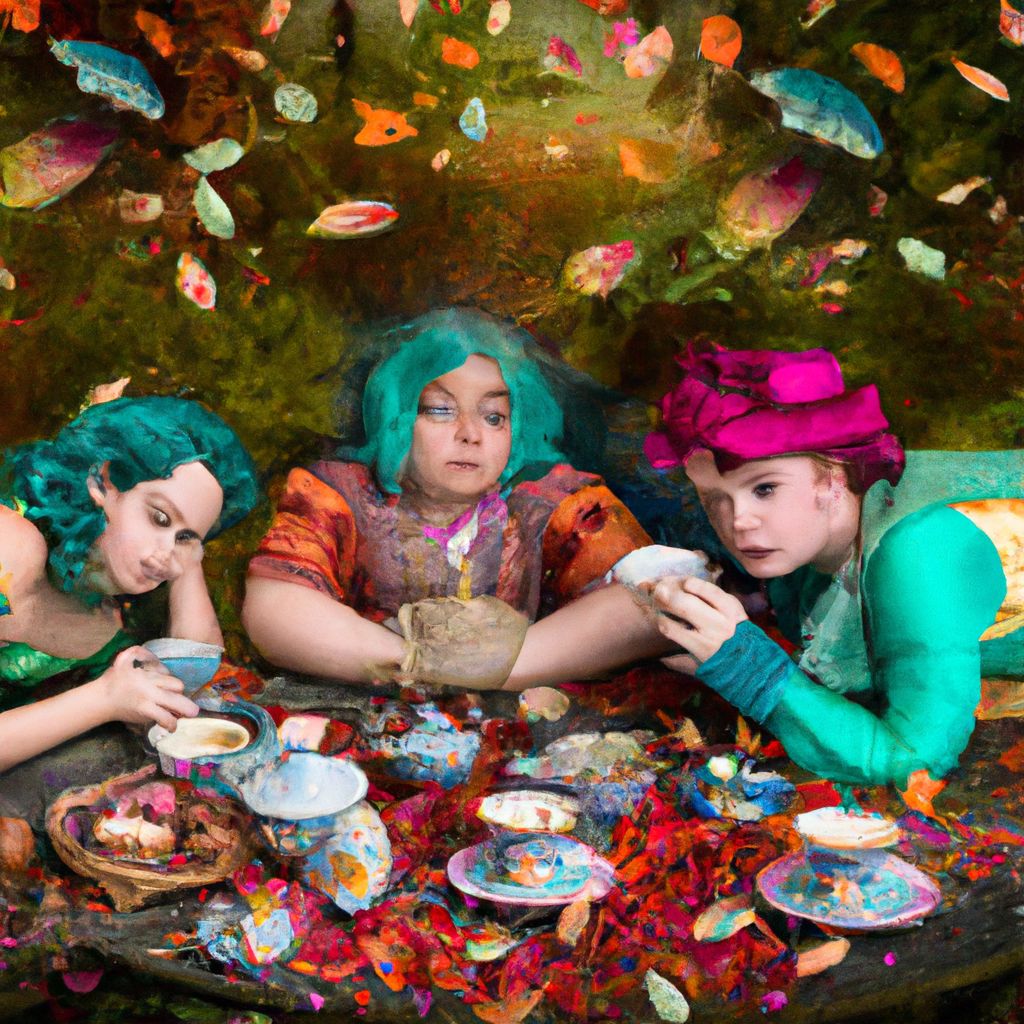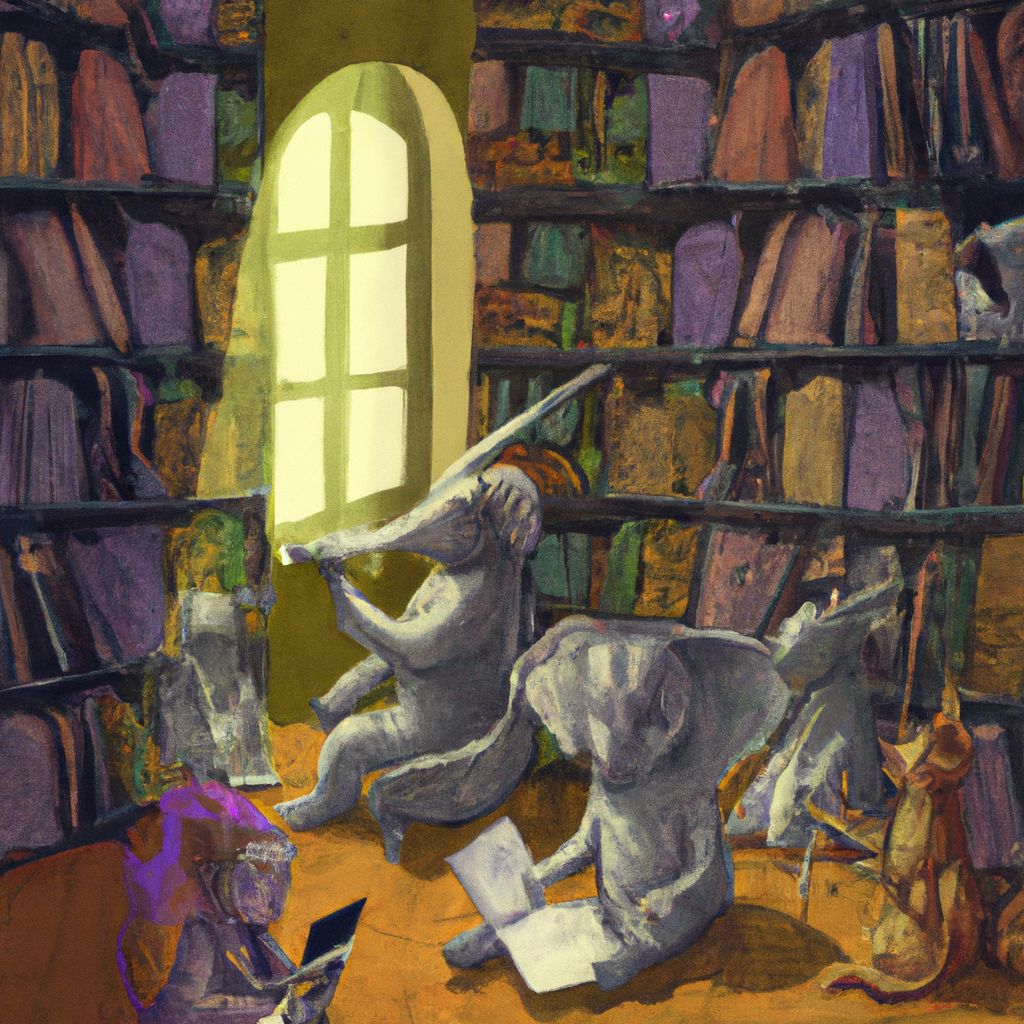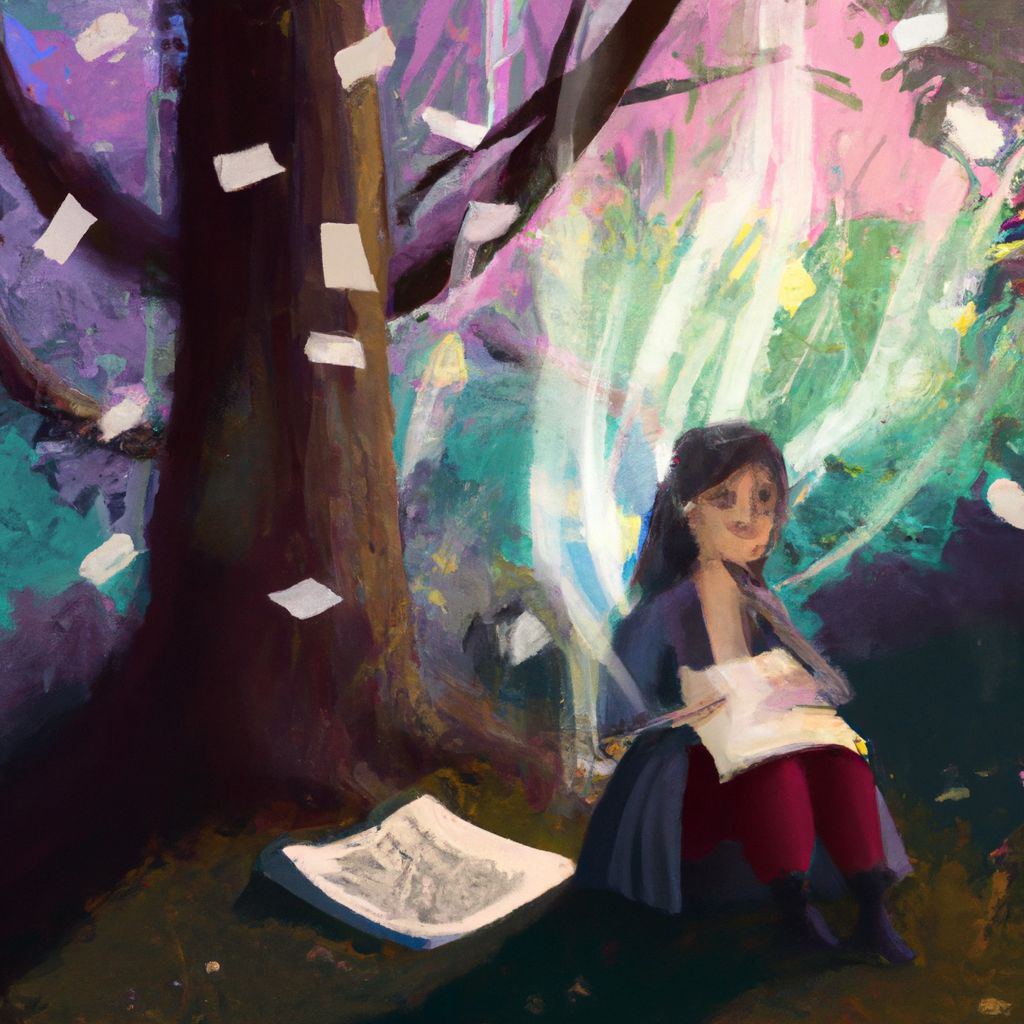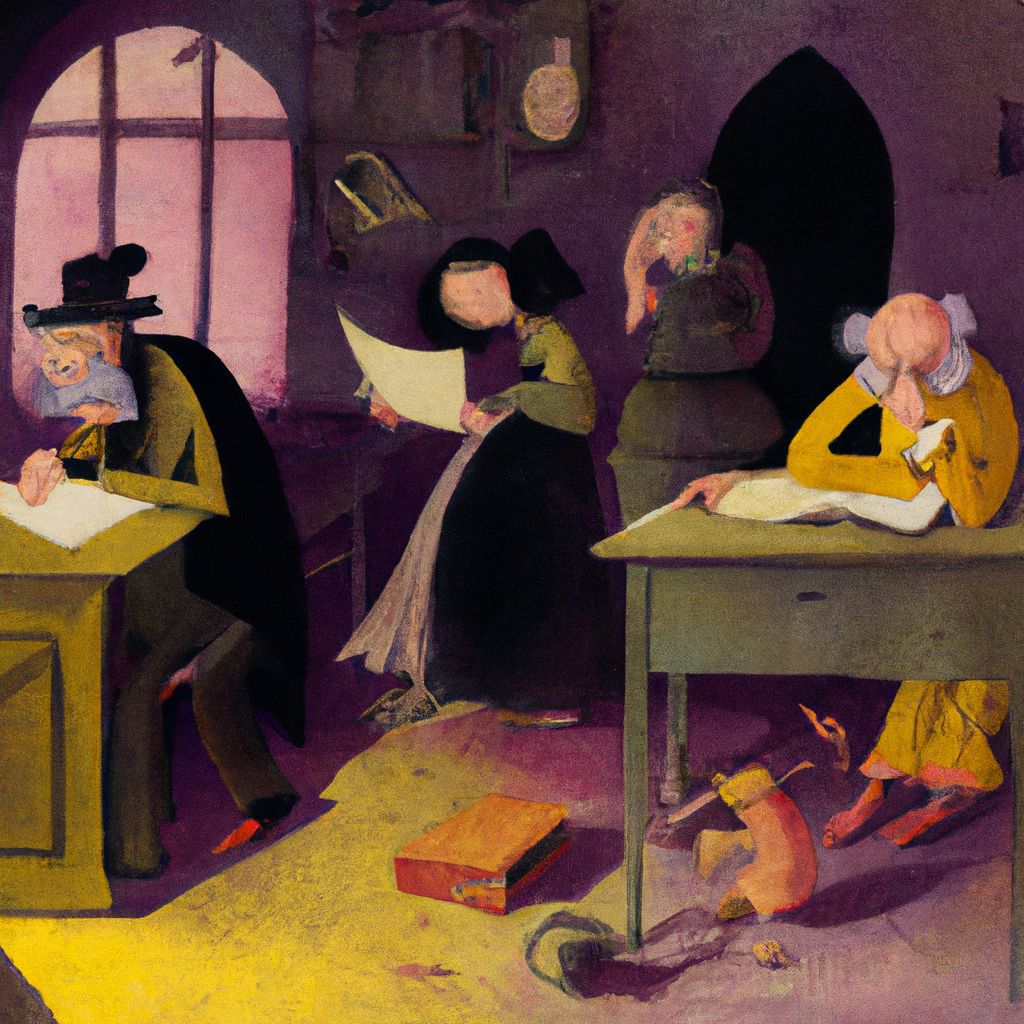- Introduction to Storytelling
- Understanding the Importance of Narrative Skills
- Basics of A Good Story: Setting
- Characters
- Conflict
- Resolution
- Exploring Different Types of Stories: Myths
- Legends
- Fables
- Personal Stories
- Steps to Develop Your Storytelling Skills
- Learning to Visualize Your Story
- Mastering the Art of Description and Detail
- Creating Engaging Characters
- Building Compelling Plots
- Developing your Unique Storytelling Voice
- Practice Makes Perfect: Storytelling Exercises
- Using Tech Tools to Enhance Storytelling
- Storytelling in Different Mediums: Written
- Oral
- Digital
- Role of Storytelling in Personal and Professional Life
- Conclusion: Embrace the Storyteller Within
Introduction to Storytelling

The art of storytelling goes back to the dawn of human civilization. It is a powerful means of communication that has evolved over the centuries, from ancient cave paintings and epic poems to modern novels, films, and digital media. Storytelling is an essential part of human interaction, used to convey knowledge, instill values, and evoke emotions.
According to Dr. Pamela Rutledge, Director of the Media Psychology Research Center, "Stories are how we make sense of the world, which is why they are at the center of every culture". Her assertion corroborates the significance of storytelling not just as a cultural phenomenon but as a critical component of human cognition and communication.
Whether you're a professional writer, a marketing executive, an educator, or simply someone who loves to share stories, understanding the art of storytelling can help you engage your audience more effectively. In this blog post, we'll delve into the nuances of storytelling, helping you to develop and hone your narrative skills.
Understanding the Importance of Narrative Skills

Narrative skills are crucial in every facet of life. They enable individuals to convey their thoughts, ideas, and experiences in an organized and engaging manner. Effective storytelling can captivate an audience, persuade others, promote empathy, and even foster social and emotional development.
In the professional world, narrative skills are highly valued. A study conducted by Stanford Graduate School of Business found that stories are up to 22 times more memorable than facts alone. This makes storytelling a powerful tool in areas such as marketing, branding, and leadership.
Developing narrative skills is also beneficial in education. Research from Ohio State University reveals that children who are exposed to storytelling can see a significant improvement in their vocabulary, comprehension, and critical thinking abilities. Furthermore, they are better able to understand complex concepts and relationships.
Even in personal relationships, good storytelling can strengthen bonds and enhance communication. Psychologists from Emory University suggest that sharing stories can bring people closer together, fostering empathy, understanding, and emotional connection.
In essence, narrative skills are not just about telling good stories; they're about connecting with others on a deeper level.
Basics of A Good Story: Setting

The setting of a story is not just about the physical location or time period. It creates the backdrop against which your characters act and your plot unfolds. It helps set the mood, influences character behavior, and can even serve as a character in itself.
Renowned author Stephen King once stated, "In many cases when a reader puts a story aside because it 'got boring,' the boredom arose because the writer grew enchanted with his powers of description and lost sight of his priority, which is to keep the ball rolling." This is a reminder that while setting is important, it must serve the story and not overtake it.
To create an effective setting, consider the following elements:
- Sensory Details: Describe what the characters see, hear, smell, touch, and taste. This helps the reader to experience the setting as if they are there.
- Mood and Atmosphere: The setting can influence the emotional tone of a story. A gloomy castle might evoke feelings of fear or suspense, while a vibrant marketplace might create a sense of excitement or chaos.
- Symbolism: The setting can symbolize certain themes or ideas. For example, a decaying mansion might represent a family's declining fortune or a society's moral decay.
Remember, the setting should be a living part of your story, helping to shape the narrative and influence character development.
Characters

Characters are the heart and soul of any story. They drive the plot, engage the audience's emotions, and bring the narrative to life. Understanding how to create memorable, believable characters is a crucial aspect of storytelling.
According to E.M. Forster, an English novelist, characters can be divided into two types: 'flat' and 'round'. Flat characters are two-dimensional, often with just one or two key traits. Round characters, on the other hand, are complex and undergo development throughout the story.
When creating characters, consider the following elements:
- Appearance: Physical attributes can reveal a lot about a character's personality, background, or role in the story.
- Personality: A character's attitudes, beliefs, and habits can shape their actions and influence their relationships with other characters.
- Background: A character's history can explain their motivations and shape their future actions.
- Development: Characters should evolve over the course of the story, learning, growing, or changing in some way.
Creating compelling characters requires empathy and observation. As American author John Gardner once said, "The writer must be able to relive or to awaken the emotions he expects his audience to live through."
Conflict

Conflict is the engine that drives a story. It creates tension, challenges characters, and keeps readers engaged. Essentially, it is the struggle between opposing forces that lies at the heart of every plot.
As Gustav Freytag, a German novelist and playwright, once noted, "Without conflict, there is no plot." His observation highlights the indispensable role of conflict in storytelling. Conflict can take many forms: internal or external, physical or emotional, personal or societal. It can stem from a character's desires or fears, from their interactions with others, or from the world around them.
When developing conflict, consider the following types:
- Person vs. Self: This is an internal conflict where a character struggles with their own emotions, beliefs, or desires.
- Person vs. Person: This is an external conflict between two or more characters.
- Person vs. Society: This conflict pits a character against societal norms or expectations.
- Person vs. Nature: In this type of conflict, a character battles against forces of nature.
Effective use of conflict can make a story more engaging, helping to draw the reader in and keep them invested in the characters and the outcome of the plot.
Resolution

The resolution, also known as the denouement, is the final part of a story where the conflict is resolved and loose ends are tied up. It provides closure for the reader, giving them a sense of satisfaction at the conclusion of the narrative journey.
American author, Flannery O'Connor once wrote that a good story "does not end with meekness and reconciliation, but with madness and destruction and the character's realization of his dreadful situation". This doesn't mean that every story needs to end in tragedy, but rather that the resolution should be impactful and meaningful, reflecting the story's themes and the character's journey.
When crafting a resolution, consider the following guidelines:
- Resolve the Main Conflict: The primary conflict that drives the story should be resolved in some way. This doesn't necessarily mean a 'happy ending', but the outcome should be clear.
- Show Character Development: The resolution is an opportunity to demonstrate how the characters have changed or grown as a result of their experiences.
- Reinforce the Story's Themes: The resolution should reflect the themes or messages of the story, reinforcing its overall meaning.
A well-crafted resolution can leave a lasting impression on the reader, providing a satisfying end to the narrative journey and reinforcing the story's themes and messages.
Exploring Different Types of Stories: Myths

Myths are traditional stories that explain the beliefs, customs, or natural phenomena of a society. They often involve gods, supernatural beings, or ancestral heroes, and they play a crucial role in a culture's worldview and value system.
According to Joseph Campbell, a renowned scholar of mythology, myths serve four primary functions: mystical, cosmological, sociological, and pedagogical. They provide humans with a sense of awe and wonder, explain the structure of the universe, validate social norms, and guide individuals through the stages of life.
When writing a myth, consider the following elements:
- Supernatural Elements: Myths often involve gods, goddesses, or other supernatural beings who play significant roles in the story.
- Symbolism: Myths are rich in symbolic elements that represent deeper meanings or universal truths.
- Moral or Lesson: Many myths convey a moral or lesson that reflects the values or beliefs of a society.
Myths, in essence, are more than just stories. They are a reflection of a culture's beliefs and values, providing a window into the human psyche and the mysteries of the universe.
Legends

Legends are traditional stories passed down through generations that are often believed to be based on historical events or people. They usually involve remarkable characters who perform extraordinary deeds and are imbued with a sense of historical realism.
As noted by folklorist Richard Dorson, "Legends are reports believed true by the narrators and their audience". This distinguishes legends from myths, which are symbolic and often involve supernatural beings.
When crafting a legend, keep the following elements in mind:
- Historical Context: Legends often have a historical setting, and the events are portrayed as having really happened.
- Extraordinary Elements: While legends are based on reality, they often involve extraordinary or miraculous events that elevate the story and add intrigue.
- Cultural Significance: Legends often reflect the values, beliefs, and collective experiences of a culture.
Legends, therefore, are a blend of fact and fiction, offering a fascinating insight into a culture's history, values, and collective identity.
Fables

Fables are short tales that convey a moral lesson, usually through the actions of anthropomorphized animals, plants, inanimate objects, or forces of nature. They are among the oldest forms of storytelling, with roots in ancient cultures around the world.
Aesop, a Greek storyteller from the 6th century BC, is perhaps the most famous fabulist. His fables, such as "The Tortoise and the Hare" and "The Boy Who Cried Wolf," are still widely read and taught today.
When writing a fable, consider the following elements:
- Anthropomorphic Characters: Fables often feature animals or inanimate objects that speak, think, and behave like humans.
- Moral Lesson: Every fable has a moral or lesson that the reader can learn from the characters' experiences.
- Simple Plot: Fables typically have a straightforward plot, with the characters' actions leading directly to the moral outcome.
Fables, with their memorable characters and clear moral lessons, are a timeless form of storytelling that continues to entertain and educate readers of all ages.
Personal Stories

Personal stories, also known as personal narratives or memoirs, are accounts of individual experiences that reveal insights about the self and the world. They provide a glimpse into the author's life, conveying personal emotions, observations, and reflections.
Maya Angelou, an acclaimed American author and poet, once said, "There is no greater agony than bearing an untold story inside you." Her words underscore the therapeutic power of sharing personal stories, providing an outlet for self-expression and a path to understanding oneself and others.
When writing a personal story, consider the following elements:
- Authenticity: Personal stories should be honest and genuine, reflecting the author's real experiences and emotions.
- Reflection: Personal stories often involve introspection, with the author examining their thoughts, feelings, and reactions to events.
- Personal Growth: Many personal stories highlight the author's growth or transformation as a result of their experiences.
Personal stories, in essence, are a journey of self-discovery, providing a profound and intimate exploration of human experiences, emotions, and growth.
Steps to Develop Your Storytelling Skills

Developing your storytelling skills is a journey that requires practice, patience, and a keen understanding of the elements of a compelling narrative. Here are some steps to help you enhance your storytelling prowess:
- Read Widely: Reading a variety of genres and styles can expose you to different narrative techniques and broaden your understanding of storytelling. As Stephen King famously said, "If you want to be a writer, you must do two things above all others: read a lot and write a lot."
- Observe and Listen: Pay close attention to the world around you. Observe people, listen to conversations, and take note of interesting situations or details. These can serve as inspiration for your stories.
- Practice Writing: Like any skill, writing improves with practice. Write regularly, experiment with different styles and formats, and don't be afraid to make mistakes.
- Seek Feedback: Feedback can provide valuable insights into your strengths and areas for improvement. Share your stories with others and be open to their critiques.
- Revise and Edit: Good writing often involves revising and editing. Review your work, refine your language, and ensure your narrative is clear and engaging.
Remember, storytelling is an art that takes time to master. But with dedication, practice, and a passion for sharing stories, you can develop your narrative skills and become a captivating storyteller.
Learning to Visualize Your Story

Visualizing your story is a powerful technique that can enhance your narrative skills. It involves creating a mental image of your story, helping you to see your characters, settings, and scenes in vivid detail.
According to Robert McKee, a renowned screenwriting lecturer, "Storytelling is the creative demonstration of truth. A story is the living proof of an idea, the conversion of idea to action." Visualizing your story can help you to transform your ideas into a compelling narrative, bringing your story to life in the reader's mind.
Here are some tips to help you visualize your story:
- Create a Storyboard: Sketch out your scenes on paper or use a digital tool. This can help you to visualize the progression of your plot and the interactions between your characters.
- Use Sensory Details: Engage all your senses when visualizing your story. Think about what your characters might see, hear, smell, taste, and touch.
- Imagine Character Interactions: Visualize your characters interacting with each other and their environment. This can help you to develop realistic dialogue and actions.
Visualizing your story can not only enhance your narrative skills but can also make the writing process more enjoyable and immersive.
Mastering the Art of Description and Detail

Effective description is an art that can breathe life into your stories, transporting readers into the world you've created. It involves painting a vivid picture with words, using sensory details, metaphors, and similes to evoke emotions and create a strong sense of place.
As Anton Chekhov, a Russian playwright and short-story writer, famously advised, "Don't tell me the moon is shining; show me the glint of light on broken glass." This encapsulates the 'show, don't tell' rule of descriptive writing, which encourages writers to illustrate a scene or character's emotions through specific details, rather than simply stating them.
Here are some tips for mastering the art of description:
- Use Sensory Details: Engage the reader's senses by describing what your characters see, hear, smell, touch, and taste. This can make your descriptions more immersive and vivid.
- Be Specific: Instead of using vague or generic descriptions, be specific. For example, instead of saying "the dog," you might say "the scruffy terrier."
- Use Figurative Language: Metaphors, similes, and other forms of figurative language can make your descriptions more vivid and evocative.
Remember, effective description is not about overloading your story with adjectives and adverbs; it's about selecting the right details that will resonate with your readers and enhance your narrative.
Creating Engaging Characters

Creating engaging characters is a critical aspect of storytelling. Your characters are the emotional bridge between your readers and your story. They should be compelling, relatable, and complex, with distinct personalities, motivations, and conflicts.
As American novelist Ernest Hemingway once noted, "When writing a novel, a writer should create living people; people, not characters. A character is a caricature." His words highlight the importance of crafting characters who feel authentic and lifelike to the reader.
Here are some tips for creating engaging characters:
- Make Them Real: Your characters should feel like real people, with their own personalities, flaws, and dreams. They should have strengths and weaknesses, just like real people do.
- Give Them Motivations: What does your character want? What do they fear? Understanding your characters' motivations can help to drive your story and make their actions more believable.
- Develop Their Backstories: A character's history can shape their personality and influence their actions. It can add depth to your characters and make them more interesting and relatable.
Remember, the key to creating engaging characters is to understand them deeply, to care about them, and to let them evolve over the course of your story.



